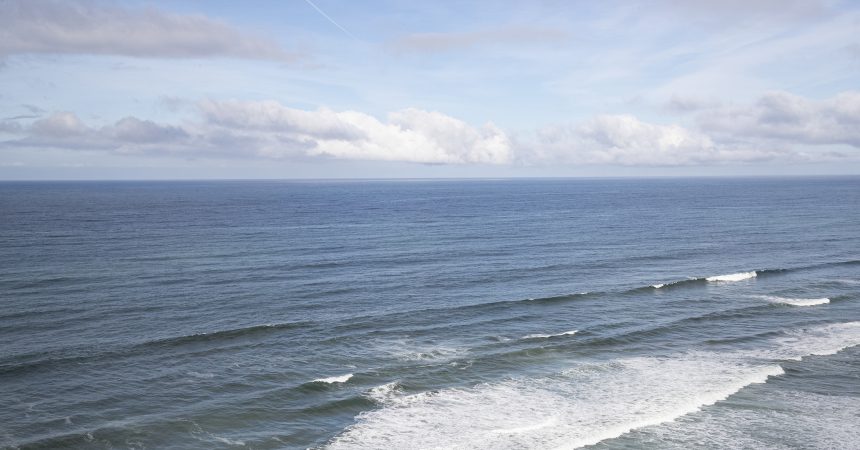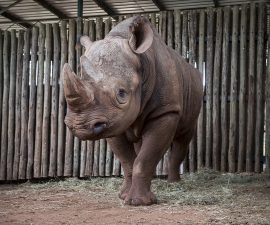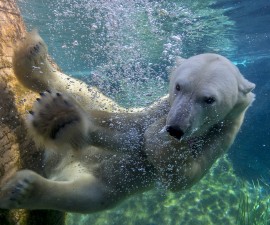By Nicholas Pilfold, Ph.D., and Nacho Vilchis, Ph.D.
On January 27, 2021, President Joe Biden signed executive orders committing the United States of America to “the goal of conserving at least 30 percent of our lands and oceans by 2030.” This initiative—now known as the 30×30 campaign—dovetails with the United Nations’ Sustainable Development Goals; among several other objectives for global health, these goals specifically promote conservation and sustainable use of terrestrial and marine ecosystems, and protection of their biodiversity. San Diego Zoo Wildlife Alliance (SDZWA) recognizes the importance of conserving lands and oceans for the sustainability of wildlife populations. We support the commitment to land and ocean conservation, and we support the 30×30 campaign.
Oceans make up more than 70 percent of the world’s surface, and they are facing environmental threats on a scale comparable to their immense size. The health of the oceans is in jeopardy because of climate change, pollution, and human exploitation. For example, due to the overharvest of fish, 52 percent of the world’s fish stocks are fully exploited, and a further 25 percent are overexploited or depleted. Fish stocks are vital to the survival of marine mammals, seabirds, and to the many people whose livelihoods depend on healthy oceans; it is therefore critical that we renew and protect our oceans’ reserves of fish. By protecting the health of our oceans, we protect the health of a global network of life.
We have already made progress towards the 30×30 ocean conservation goal in the United States: 26 percent of our waters are within Marine Protected Areas, meaning that they are recognized and managed with long-term conservation in mind. Although this is surely a promising step, there is room for further conservation progress. Currently, only 3 percent of our waters are classified as “no-take” areas—these are waters in which fishing and all other extractive activities are prohibited. Increasing the percentage of no-take areas would expand and replenish the ocean reserves. This would ultimately benefit adjacent fisheries and the entire web of marine wildlife, as the wellbeing of both humans and wildlife rely on stable levels of fish stocks.
The Arctic National Wildlife Refuge (ANWR) in northeastern Alaska includes a Marine Protected Area. Every autumn, pregnant polar bear mothers arrive at the ANWR coast. Here, they will dig the earthen dens in which they will hibernate and birth their cubs. When cubs are born in mid-winter, they weigh about one pound and are approximately the size of a loaf of bread. These tiny, helpless cubs need the protection of the den in order to survive the extreme cold in their first few months of life. When they emerge from their den in the spring, mother and cubs will rely on stable, intact sea ice as a platform from which to hunt fat-rich seals. The condition and quantity of seals, in turn, will depend on the available fish stocks.

The relationship of polar bears to land and sea, as well to fish and seals, demonstrates the deep interconnectedness of ecosystems and wildlife. Furthermore, protection of the ANWR demonstrates the important relationship between land conservation, ocean conservation, and wildlife conservation.
SDZWA has been working in ocean environments for more than 15 years. Work in our oceans hub includes research on polar bears in the Arctic, where our scientists study environmental factors that affect maternal denning, and the bears’ energy requirements as they face sea ice shrinkage and reduced access to food. Collaborating with our partners at Polar Bears International, Environment and Climate Change Canada, the Norwegian Polar Institute, along with academic institutions, we are learning what polar bears need in order to thrive in their Arctic home.

Our oceans hub work also includes research on local wildlife, such as California least terns. In San Diego, endangered least terns deal with the same forage fish availability issues that endangered African penguins also deal with in South Africa. These issues are mostly related to correctly timing nesting and chick rearing to occur with the spring bloom of phytoplankton: the spring bloom serves as food for fatty fish such as anchovies and sardines, and these fish, in turn become more readily available as food for chicks. However, ocean warming has caused spring bloom timing to be more variable, and the wrong timing can result in not enough fish to feed chicks as well as colony abandonment. By studying all of these factors, we hope to leverage our understanding of local wildlife to tackle worldwide conservation issues.
Our partnerships make global conservation possible, and you are our most important ally! Here are some simple ways to get involved in the effort to protect and conserve habitats:
- Talk about it: Tell your family and friends about the 30×30 initiative and its importance to conserving lands and oceans for the sustainability of wildlife populations, both locally and across the world.
- Use Water Wisely: Cleaning, pumping and heating water uses a lot of energy. Taking shorter showers or using a drip irrigation system to water your lawn saves energy, helping to protect ocean wildlife.
- Join Our Climate Pledge: You can help us slow climate change by reducing carbon emissions. Visit sdzwa.org/take-action to sign our pledge to commit to reducing your carbon footprint.





